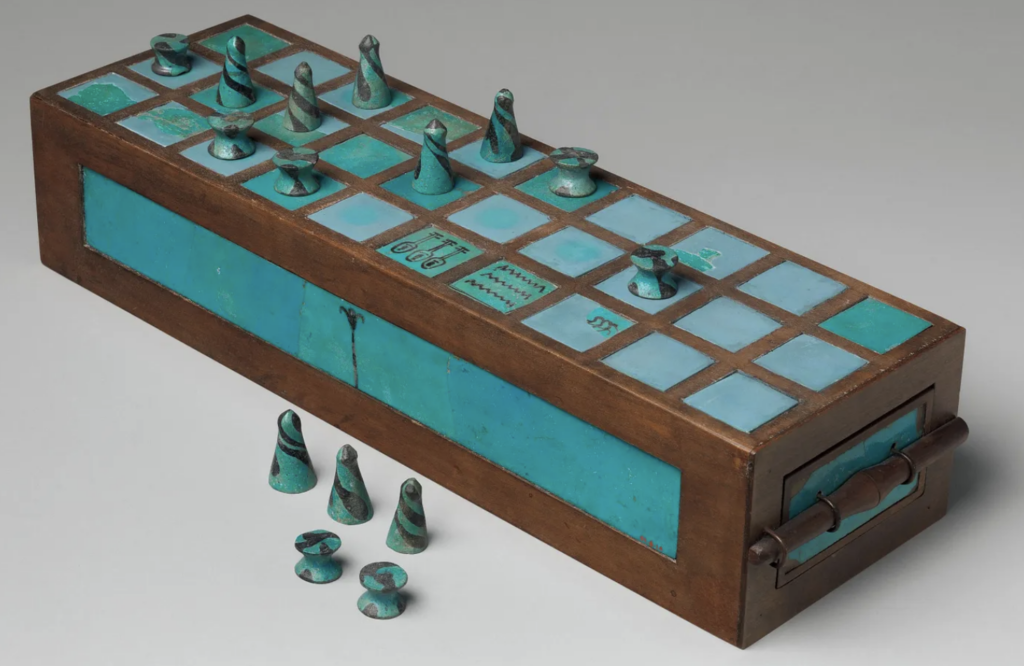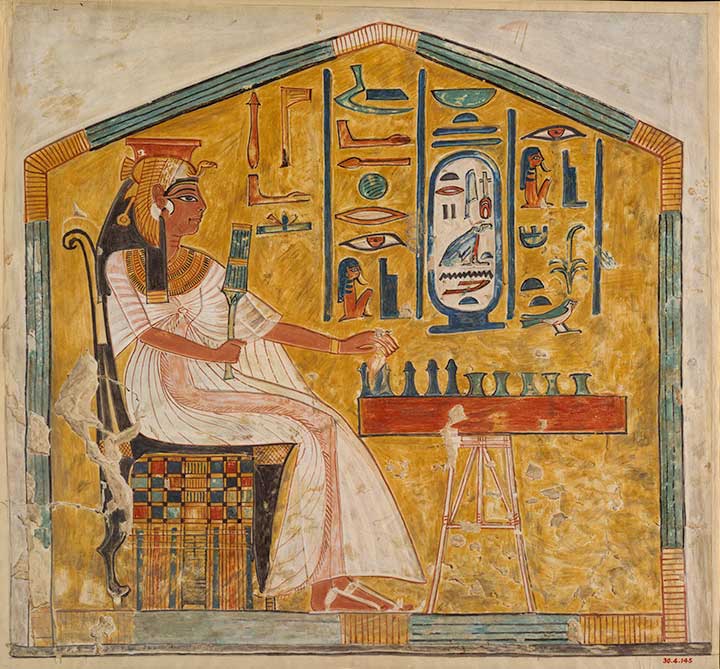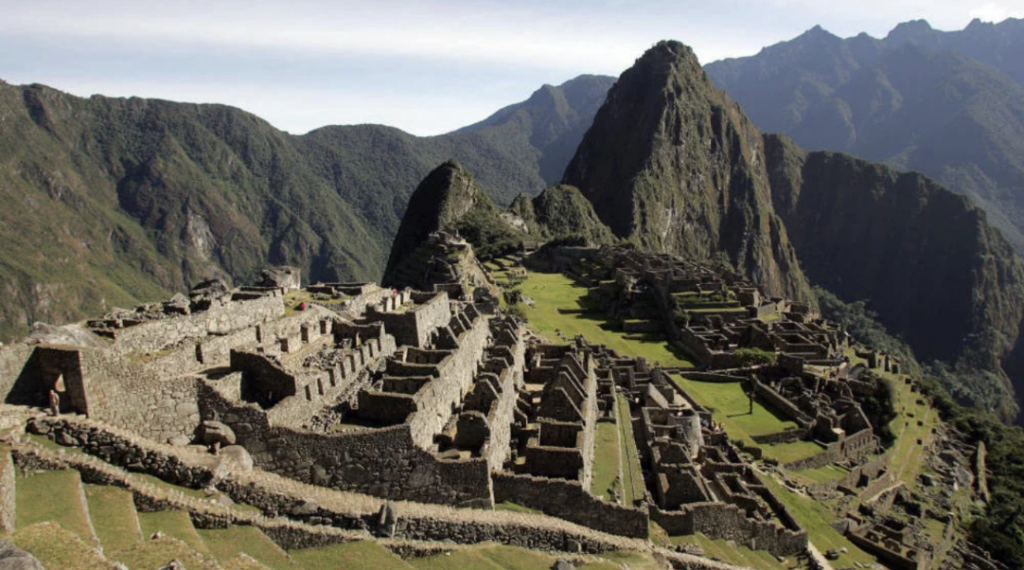Archaeology never ceases to amaze us with its ability to unearth ancient games, offering us glimpses into the pastimes and cultures of long-forgotten civilizations. Among these fascinating discoveries lies Senet, an ancient board game (Figure 1) that has piqued the curiosity of archaeologists and history enthusiasts alike. In this exploration, we will delve into the historical significance and gameplay of Senet, a captivating archaeological find from ancient Egypt.
Senet, known as ‘the game of passing,’ once held sway in the world of ancient Egyptian entertainment, boasting a rich history spanning over 3,500 years. Its discovery by archaeologists has sparked renewed interest in unraveling its cultural significance.

The game of Senet, cherished in the heart of ancient Egypt, pitted two players against each other, employing casting sticks to determine their moves. The aim of the game is to be the first player to successfully move your pieces around the board while avoiding the hazards present on the board. The gameplay granted players the ability to advance their pieces, strategically outflank their opponents, or craftily obstruct their adversary’s path.
The final quintet of squares (squares 26–30) on the Senet board often bore embellishments. Square 26 typically showcased the symbol for ‘good’ (nefer), bestowing an extra turn upon the player landing there. Square 27 portrayed a water hazard, penalizing any game piece landing on it by expelling it from the grid, preventing the piece from progressing further on the board.
Senet transcended its role as a mere pastime in ancient Egypt, becoming intricately intertwined with the concept of the afterlife, a cornerstone belief in Egyptian culture. The unearthing of game boxes and depictions of Senet in numerous tombs, including those belonging to esteemed figures like Queen Nefertari (Figure 2) and King Tutankhamun, who, notably, was “ buried with no fewer than five game boxes” (Zwang 2017), underscores the game’s symbolic representation of the journey to the afterlife. Specific squares mirrored the challenges and obstacles an individual might encounter on their journey through the afterlife. In this context, Senet evolved beyond the confines of a conventional board game, emerging as a symbolic manifestation of the eternal struggle for immortality.

Furthermore, it is also believed that “in the minds of the Egyptians, this senet gaming ritual could be performed by both the living and the dead” (Piccione 2020). Deceased individuals used it as a magical safeguard during their afterlife journey, while the living performed it to ensure a safe future journey after death. Additionally, it allowed the living to experience the netherworld journey without death, uniting with Ra, their sun god.
The discovery of Senet and its artifacts underscores the enduring power of archaeology to unveil hidden facets of ancient civilizations. Senet was more than just a board game; it served as a bridge between the living and the afterlife, deeply woven into the beliefs and rituals of ancient Egypt. As we continue our journey of exploration into the world’s archaeological treasures, Senet remains a poignant reminder of the cultural wealth buried beneath the sands of time, patiently waiting to be rediscovered and celebrated.
Reference List:
Zwang, Danielle. 2017. “Senet and Twenty Squares: Two Board Games Played by Ancient Egyptians.” The Met, July 19, 2017.
Piccione, Peter A. 2020. “GAMING WITH THE GODS: The Game of Senet and Ancient Egyptian Religious Beliefs.”
Photo Sources:
Figure 1: Preskar, Peter. 2021. “Senet — The World’s Oldest Known Board Game.” Medium. March 21.
Figure 2: Zwang, Danielle. 2017. “Senet and Twenty Squares: Two Board Games Played by Ancient Egyptians.” The Met, July 19, 2017.
Additional Content:
If you are interested in learning more about how to play Senet visit this page:
https://otagomuseum.nz/athome/how-to-play-senet
If you are interested in learning more about board games discovered by archaeologists visit this page:


